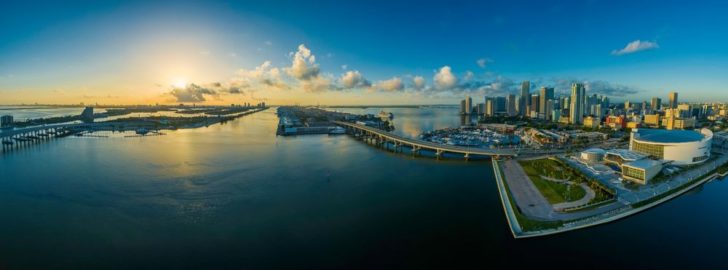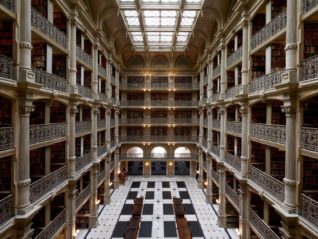Architectural Beauty in Oslo: A Comprehensive Guide

Introduction:
Oslo, the capital city of Norway, is renowned for its rich cultural heritage and stunning architectural landscapes. The city’s architecture reflects a blend of traditional and modern influences, creating a unique and captivating visual experience. In this article, we will provide a detailed overview of the architecture in Oslo, exploring its diverse types, popular examples, and the quantitative measurements associated with it. Additionally, we will discuss the distinct characteristics that set different architectural styles in Oslo apart, as well as the historical context that shapes the advantages and disadvantages of each. Get ready to embark on a journey through the architectural wonders of Oslo.
1. An In-Depth Overview of Architecture in Oslo:

Architecture in Oslo represents a harmonious amalgamation of past and present. From iconic landmarks to contemporary designs, the city showcases an impressive array of architectural styles. The urban landscape offers a captivating mix of medieval structures, neoclassical buildings, and cutting-edge modern creations. The integration of new architecture with historic surroundings is a defining characteristic of Oslo’s architectural scene.
2. An Extensive Presentation of Oslo’s Architecture:
2.1 Types of Architecture:
Oslo boasts a range of architectural styles, including:
– Medieval Architecture: Oslo’s historic core showcases well-preserved medieval edifices, such as Akershus Fortress and Oslo Cathedral. These structures evoke a sense of history and transport visitors to a different era.
– Neoclassical Architecture: Influenced by the Romanticism movement, neoclassical buildings like the Royal Palace and the University of Oslo reflect elegance and grandeur. The use of columns, symmetry, and ornate details characterize this architectural style.
– Modern Architecture: Contemporary buildings, such as the Oslo Opera House and the Astrup Fearnley Museum, redefine Oslo’s skyline. These architectural marvels emphasize minimalism, clean lines, and the innovative use of materials like glass and steel.
2.2 Popular Examples:
– The Oslo Opera House: Designed by Snøhetta, this iconic building has become a symbol of Oslo. Its distinctive marble exterior resembles an iceberg emerging from the fjord, and the rooftop serves as a public space offering panoramic views of the city.
– Barcode Project: Located in Bjørvika, the Barcode Project features a series of high-rise buildings with unique facades. Each structure represents an individual architectural vision, resulting in a vibrant and diverse urban area.
3. Quantitative Measurements of Oslo’s Architecture:
Oslo’s architecture is not only visually appealing but also quantifiably impressive. The city’s commitment to sustainable design and energy efficiency has earned it recognition on a global scale. For instance:
– Green Roofs: Oslo has a high number of buildings with green roofs, contributing to insulation, reducing stormwater runoff, and promoting biodiversity.
– LEED-Certified Buildings: Leadership in Energy and Environmental Design (LEED) is a globally recognized rating system for green buildings. Oslo boasts several LEED-certified structures, showcasing the city’s dedication to sustainability.
4. Differentiating Architectural Styles in Oslo:
Each architectural style in Oslo carries distinct characteristics that set them apart:
– Medieval Architecture: Known for its intricate detailing, pointed arches, and use of natural materials, medieval architecture exudes a sense of history and craftsmanship.
– Neoclassical Architecture: Symmetry, grandeur, and meticulous attention to detail define neoclassical buildings. They often feature columns, pediments, and ornate facades.
– Modern Architecture: Clean lines, minimalism, and a focus on functionality are the defining features of modern architecture in Oslo. The use of innovative materials and a connection with the surrounding environment are also integral to these designs.
5. Historical Analysis of the Pros and Cons of Different Architectural Styles in Oslo:
5.1 Benefits:
– Medieval Architecture: The preservation of medieval structures maintains a tangible connection to the city’s past, offering a glimpse into its historical roots.
– Neoclassical Architecture: The grandeur and elegance of neoclassical buildings contribute to the city’s cultural legacy, creating a visually captivating environment.
– Modern Architecture: Oslo’s modern buildings symbolize progress, innovation, and the city’s commitment to sustainability. They add a contemporary flair to the urban landscape, attracting visitors and residents alike.
5.2 Drawbacks:
– Medieval Architecture: The limited adaptability of medieval structures poses challenges for modern infrastructure requirements and urban development.
– Neoclassical Architecture: Some critics argue that neoclassical buildings can create a disconnect between the past and present, potentially overshadowing contemporary architectural endeavors.
– Modern Architecture: The introduction of modern designs can create a visual contrast with historic surroundings, sparking debates about maintaining the city’s architectural identity.
Conclusion:
Oslo’s architecture is a prime example of how a city can seamlessly blend tradition and innovation. From medieval masterpieces to contemporary creations, the architectural diversity in Oslo never fails to impress. The rich history, sustainable practices, and unique styles contribute to the city’s enduring charm. By preserving its heritage while embracing the future, Oslo continues to shape the architectural landscape not only within Norway but also on a global scale.
FAQ
How does Oslo prioritize sustainability in its architecture?
What are some popular examples of architecture in Oslo?
What are the different types of architecture in Oslo?
Flere nyheter
Barnevernsrett: En nøkkel til barnets beste
Introduction: Oslo, the capital city of Norway, is renowned for its rich cultural heritage and stunning architectural landscapes. The city’s architecture reflects a blend of traditional and modern influences, creating a unique and captivating v...
Hedda Nergård
01 mai 2024
Tannlege Porsgrunn: Din guide til tannhelse og velvære
Introduction: Oslo, the capital city of Norway, is renowned for its rich cultural heritage and stunning architectural landscapes. The city’s architecture reflects a blend of traditional and modern influences, creating a unique and captivating v...
Erik Østby
15 februar 2024
Bibliotekar lønn: En dybdegående utsikt over lønn for bibliotekarer
Introduction: Oslo, the capital city of Norway, is renowned for its rich cultural heritage and stunning architectural landscapes. The city’s architecture reflects a blend of traditional and modern influences, creating a unique and captivating v...
Johanne Hansen
18 januar 2024
Bibliotekar utdanning – En oversikt over karrieremuligheter og utdanningsveier
Introduction: Oslo, the capital city of Norway, is renowned for its rich cultural heritage and stunning architectural landscapes. The city’s architecture reflects a blend of traditional and modern influences, creating a unique and captivating v...
Johanne Hansen
18 januar 2024











